Services Marketing • Defining Services •

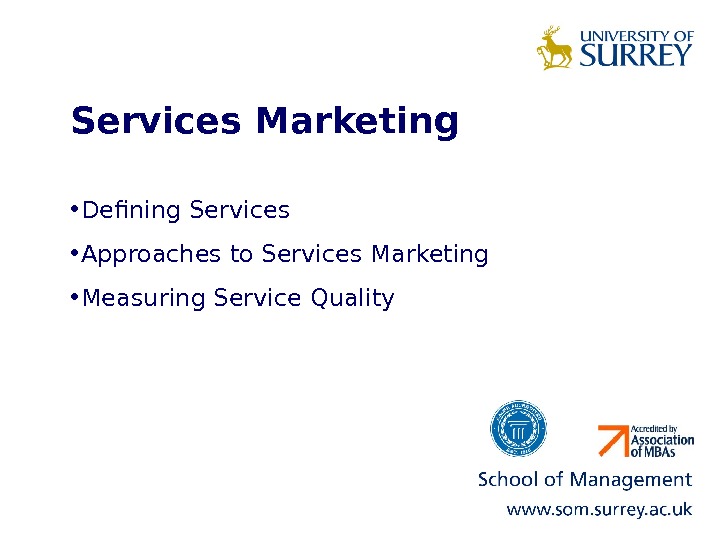
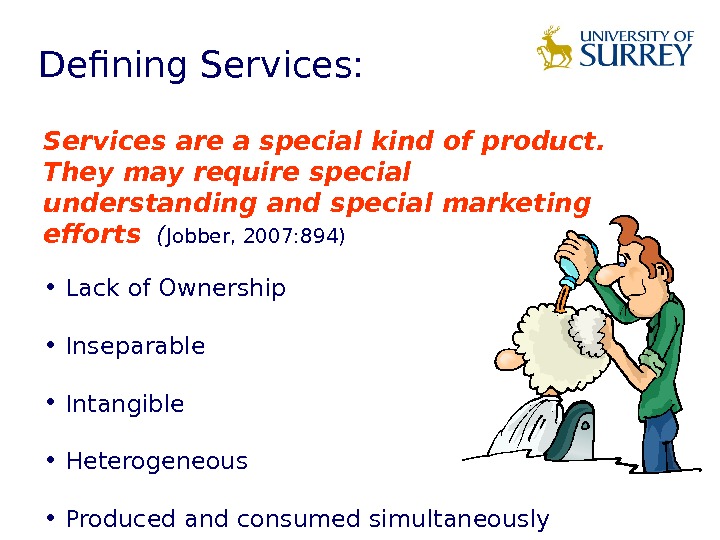
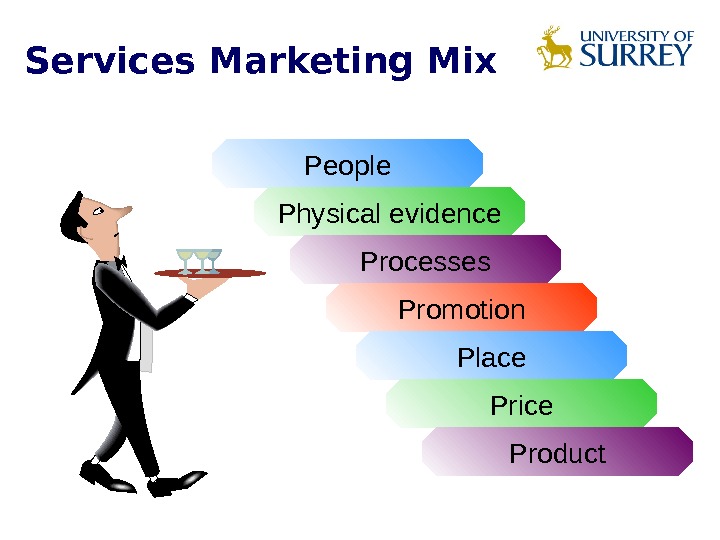
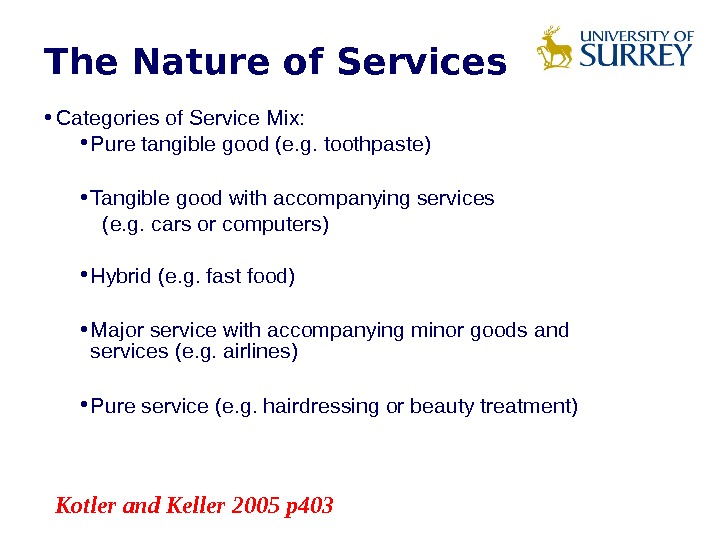
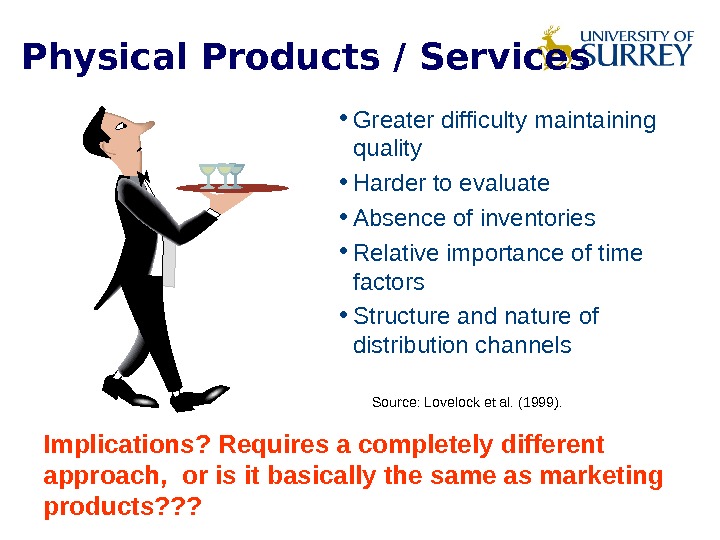
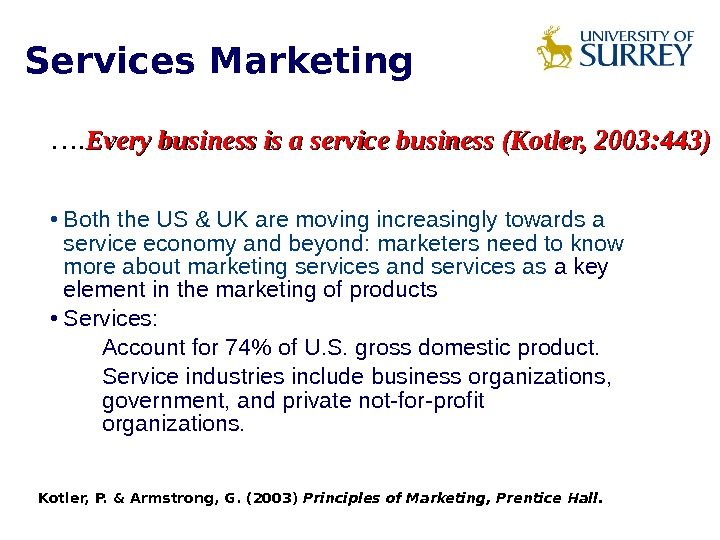

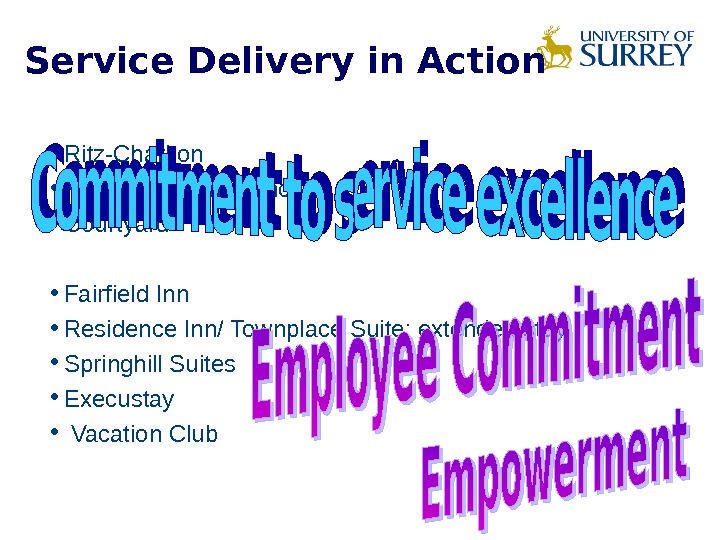
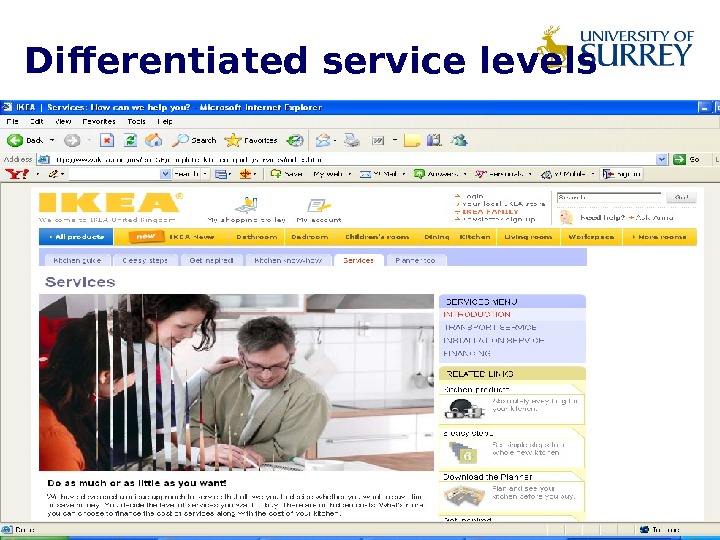
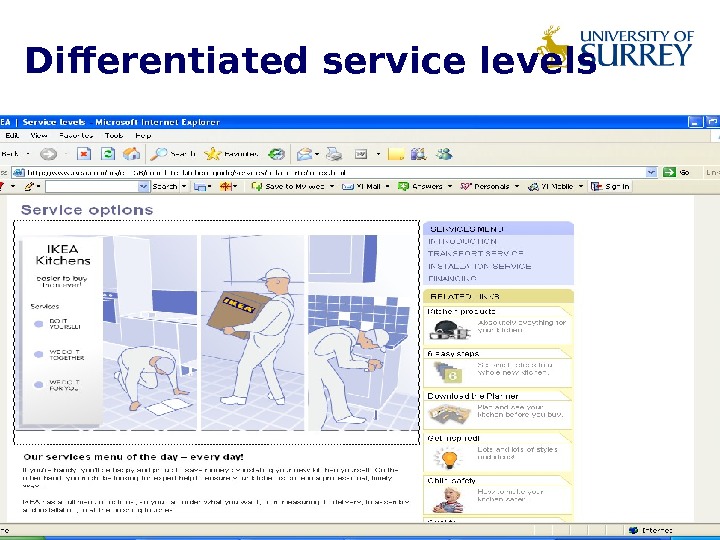
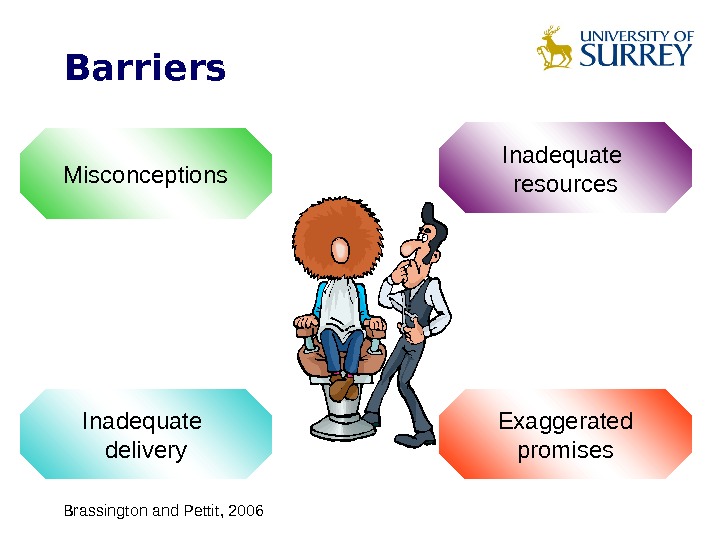
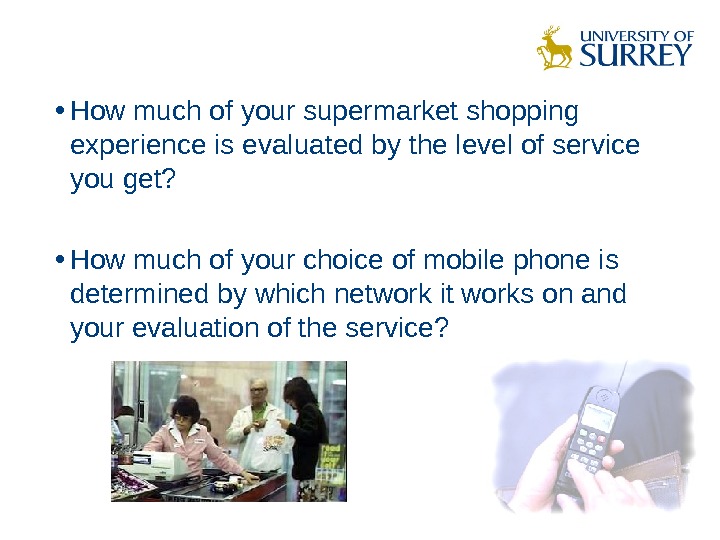
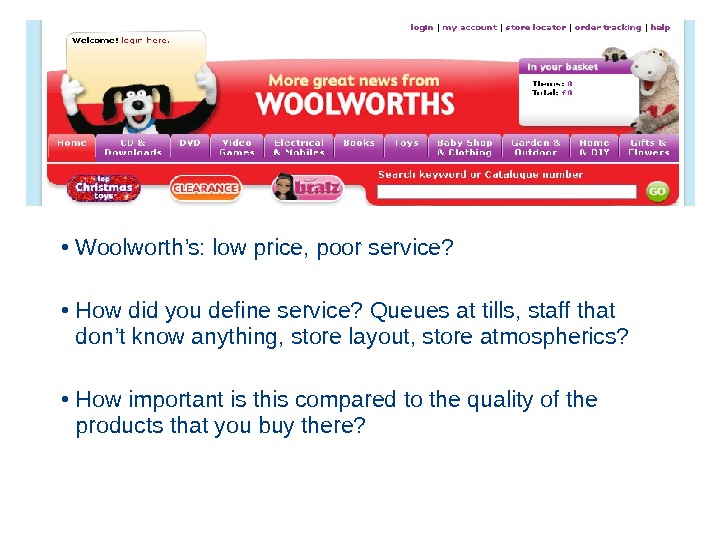
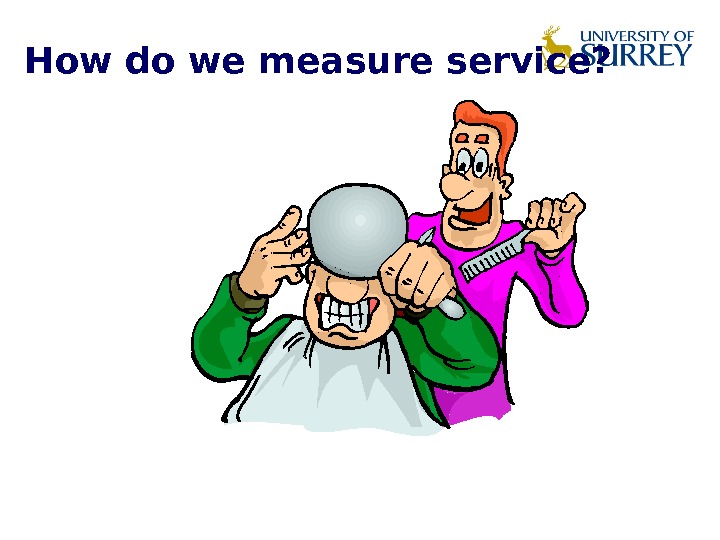
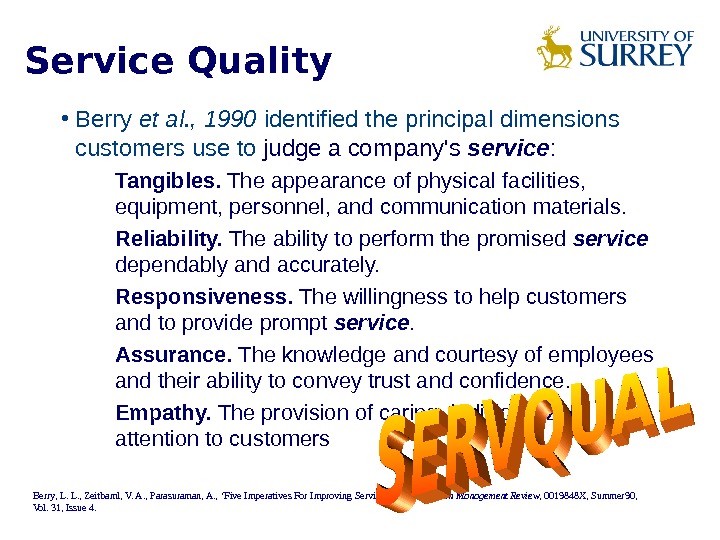
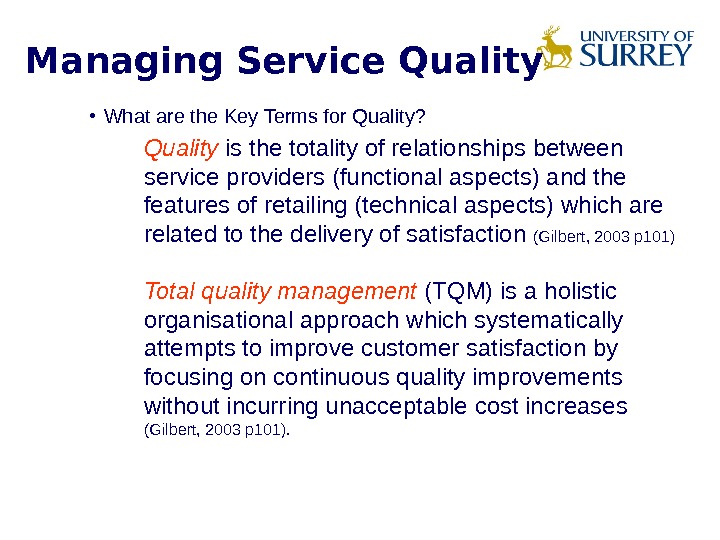
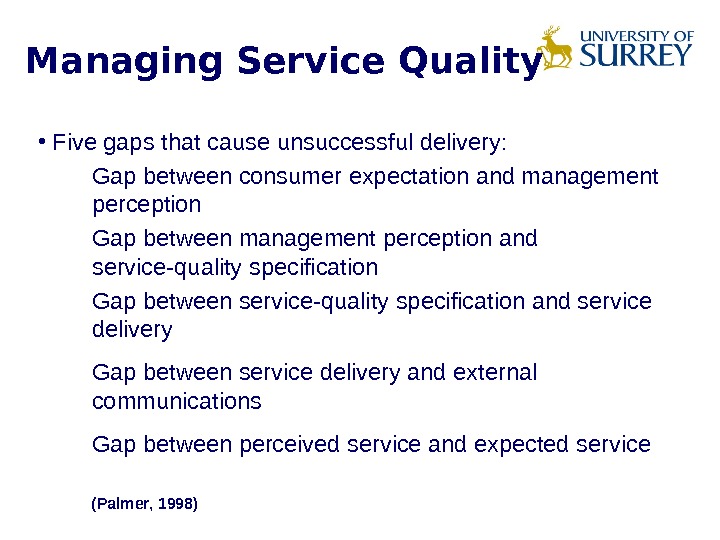
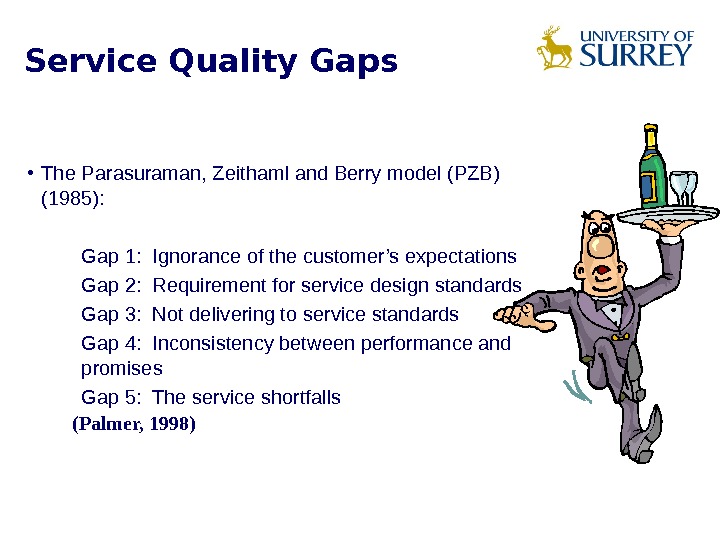
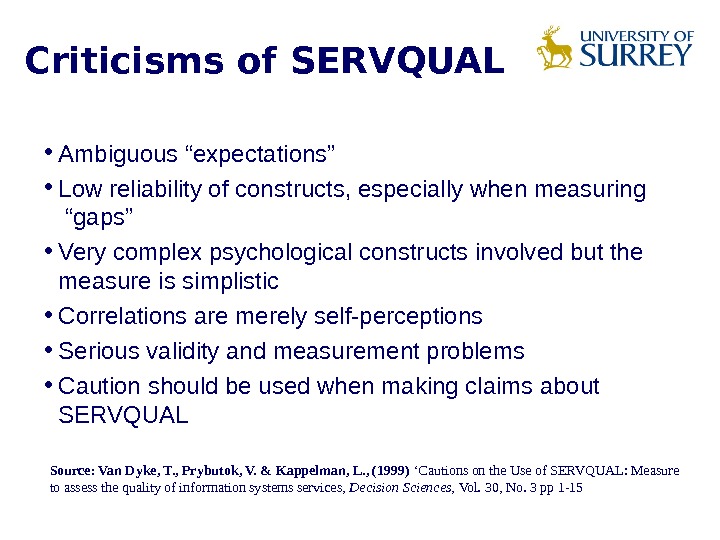
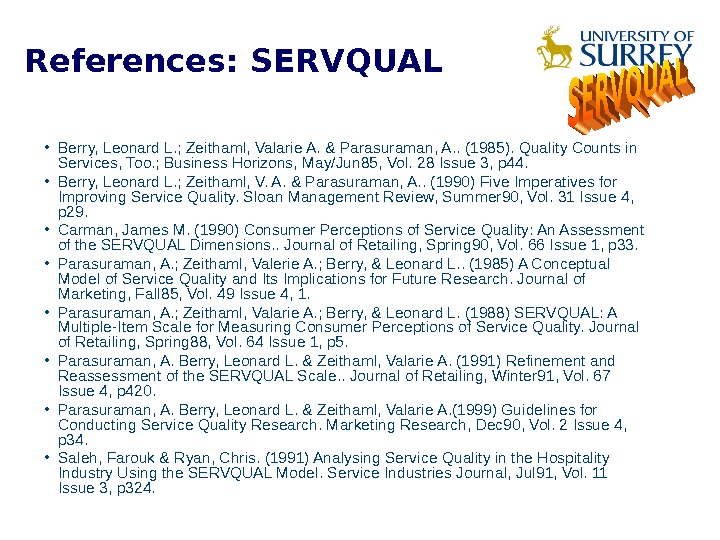
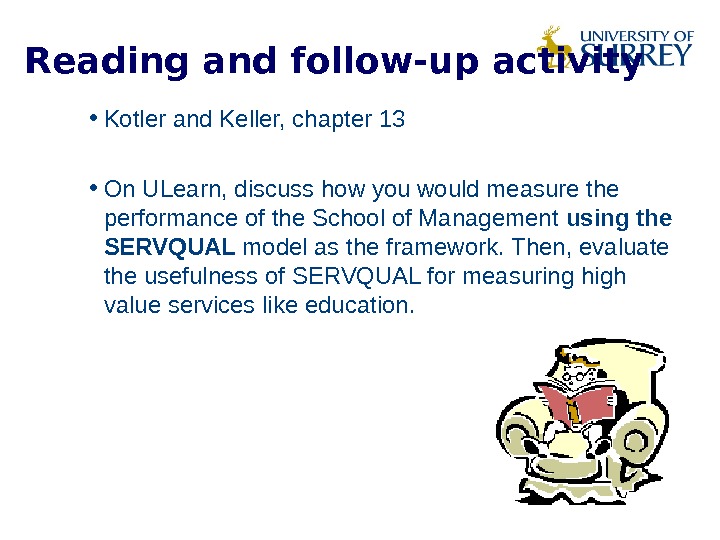
- Размер: 1.6 Mегабайта
- Количество слайдов: 21
Описание презентации Services Marketing • Defining Services • по слайдам
 Services Marketing • Defining Services • Approaches to Services Marketing • Measuring Service Quality
Services Marketing • Defining Services • Approaches to Services Marketing • Measuring Service Quality
 Services are a special kind of product. They may require special understanding and special marketing efforts ( Jobber, 2007: 894) • Lack of Ownership • Inseparable • Intangible • Heterogeneous • Produced and consumed simultaneously. Defining Services:
Services are a special kind of product. They may require special understanding and special marketing efforts ( Jobber, 2007: 894) • Lack of Ownership • Inseparable • Intangible • Heterogeneous • Produced and consumed simultaneously. Defining Services:
 Services Marketing Mix People Physical evidence Processes Promotion Place Price Product
Services Marketing Mix People Physical evidence Processes Promotion Place Price Product
 • Categories of Service Mix: • Pure tangible good (e. g. toothpaste) • Tangible good with accompanying services (e. g. cars or computers) • Hybrid (e. g. fast food) • Major service with accompanying minor goods and services (e. g. airlines) • Pure service (e. g. hairdressing or beauty treatment)The Nature of Services Kotler and Keller 2005 p
• Categories of Service Mix: • Pure tangible good (e. g. toothpaste) • Tangible good with accompanying services (e. g. cars or computers) • Hybrid (e. g. fast food) • Major service with accompanying minor goods and services (e. g. airlines) • Pure service (e. g. hairdressing or beauty treatment)The Nature of Services Kotler and Keller 2005 p
 Physical Products / Services • Greater difficulty maintaining quality • Harder to evaluate • Absence of inventories • Relative importance of time factors • Structure and nature of distribution channels Source: Lovelock et al. (1999). Implications? Requires a completely different approach, or is it basically the same as marketing products? ? ?
Physical Products / Services • Greater difficulty maintaining quality • Harder to evaluate • Absence of inventories • Relative importance of time factors • Structure and nature of distribution channels Source: Lovelock et al. (1999). Implications? Requires a completely different approach, or is it basically the same as marketing products? ? ?
 • Both the US & UK are moving increasingly towards a service economy and beyond: marketers need to know more about marketing services and services as a key element in the marketing of products • Services: Account for 74% of U. S. gross domestic product. Service industries include business organizations, government, and private not-for-profit organizations. Services Marketing Kotler, P. & Armstrong, G. (2003) Principles of Marketing, Prentice Hall. …. Every business is a service business (Kotler, 2003: 443)
• Both the US & UK are moving increasingly towards a service economy and beyond: marketers need to know more about marketing services and services as a key element in the marketing of products • Services: Account for 74% of U. S. gross domestic product. Service industries include business organizations, government, and private not-for-profit organizations. Services Marketing Kotler, P. & Armstrong, G. (2003) Principles of Marketing, Prentice Hall. …. Every business is a service business (Kotler, 2003: 443)
 Service Delivery in Action
Service Delivery in Action
 Service Delivery in Action • Ritz-Charlton • Marriott / Renaissance • Courtyard • Fairfield Inn • Residence Inn/ Townplace Suite: extended stay • Springhill Suites • Execustay • Vacation Club
Service Delivery in Action • Ritz-Charlton • Marriott / Renaissance • Courtyard • Fairfield Inn • Residence Inn/ Townplace Suite: extended stay • Springhill Suites • Execustay • Vacation Club
 Differentiated service levels
Differentiated service levels
 Differentiated service levels
Differentiated service levels
 Barriers Misconceptions Inadequate resources Inadequate delivery Exaggerated promises Brassington and Pettit,
Barriers Misconceptions Inadequate resources Inadequate delivery Exaggerated promises Brassington and Pettit,
 • How much of your supermarket shopping experience is evaluated by the level of service you get? • How much of your choice of mobile phone is determined by which network it works on and your evaluation of the service?
• How much of your supermarket shopping experience is evaluated by the level of service you get? • How much of your choice of mobile phone is determined by which network it works on and your evaluation of the service?
 • Woolworth’s: low price, poor service? • How did you define service? Queues at tills, staff that don’t know anything, store layout, store atmospherics? • How important is this compared to the quality of the products that you buy there?
• Woolworth’s: low price, poor service? • How did you define service? Queues at tills, staff that don’t know anything, store layout, store atmospherics? • How important is this compared to the quality of the products that you buy there?
 How do we measure service?
How do we measure service?
 Service Quality • Berry et al. , 1990 identified the principal dimensions customers use to judge a company’s service : Tangibles. The appearance of physical facilities, equipment, personnel, and communication materials. Reliability. The ability to perform the promised service dependably and accurately. Responsiveness. The willingness to help customers and to provide prompt service. Assurance. The knowledge and courtesy of employees and their ability to convey trust and confidence. Empathy. The provision of caring, individualized attention to customers Berry, L. L. , Zeitbaml, V. A. , Parasuraman, A. , ‘ Five Imperatives For Improving Service Quality’ , Sloan Management Review , 0019848 X, Summer 90, Vol. 31, Issue 4.
Service Quality • Berry et al. , 1990 identified the principal dimensions customers use to judge a company’s service : Tangibles. The appearance of physical facilities, equipment, personnel, and communication materials. Reliability. The ability to perform the promised service dependably and accurately. Responsiveness. The willingness to help customers and to provide prompt service. Assurance. The knowledge and courtesy of employees and their ability to convey trust and confidence. Empathy. The provision of caring, individualized attention to customers Berry, L. L. , Zeitbaml, V. A. , Parasuraman, A. , ‘ Five Imperatives For Improving Service Quality’ , Sloan Management Review , 0019848 X, Summer 90, Vol. 31, Issue 4.
 Managing Service Quality • What are the Key Terms for Quality? Quality is the totality of relationships between service providers (functional aspects) and the features of retailing (technical aspects) which are related to the delivery of satisfaction (Gilbert, 2003 p 101) Total quality management (TQM) is a holistic organisational approach which systematically attempts to improve customer satisfaction by focusing on continuous quality improvements without incurring unacceptable cost increases (Gilbert, 2003 p 101).
Managing Service Quality • What are the Key Terms for Quality? Quality is the totality of relationships between service providers (functional aspects) and the features of retailing (technical aspects) which are related to the delivery of satisfaction (Gilbert, 2003 p 101) Total quality management (TQM) is a holistic organisational approach which systematically attempts to improve customer satisfaction by focusing on continuous quality improvements without incurring unacceptable cost increases (Gilbert, 2003 p 101).
 Managing Service Quality • Five gaps that cause unsuccessful delivery: Gap between consumer expectation and management perception Gap between management perception and service-quality specification Gap between service-quality specification and service delivery Gap between service delivery and external communications Gap between perceived service and expected service (Palmer, 1998)
Managing Service Quality • Five gaps that cause unsuccessful delivery: Gap between consumer expectation and management perception Gap between management perception and service-quality specification Gap between service-quality specification and service delivery Gap between service delivery and external communications Gap between perceived service and expected service (Palmer, 1998)
 Service Quality Gaps • The Parasuraman, Zeithaml and Berry model (PZB) (1985): Gap 1: Ignorance of the customer’s expectations Gap 2: Requirement for service design standards Gap 3: Not delivering to service standards Gap 4: Inconsistency between performance and promises Gap 5: The service shortfalls (Palmer, 1998)
Service Quality Gaps • The Parasuraman, Zeithaml and Berry model (PZB) (1985): Gap 1: Ignorance of the customer’s expectations Gap 2: Requirement for service design standards Gap 3: Not delivering to service standards Gap 4: Inconsistency between performance and promises Gap 5: The service shortfalls (Palmer, 1998)
 Criticisms of SERVQUAL • Ambiguous “expectations” • Low reliability of constructs, especially when measuring “gaps” • Very complex psychological constructs involved but the measure is simplistic • Correlations are merely self-perceptions • Serious validity and measurement problems • Caution should be used when making claims about SERVQUAL Source: Van Dyke, T. , Prybutok, V. & Kappelman, L. , (1999) ‘Cautions on the Use of SERVQUAL: Measure to assess the quality of information systems services, Decision Sciences, Vol. 30, No. 3 pp 1 —
Criticisms of SERVQUAL • Ambiguous “expectations” • Low reliability of constructs, especially when measuring “gaps” • Very complex psychological constructs involved but the measure is simplistic • Correlations are merely self-perceptions • Serious validity and measurement problems • Caution should be used when making claims about SERVQUAL Source: Van Dyke, T. , Prybutok, V. & Kappelman, L. , (1999) ‘Cautions on the Use of SERVQUAL: Measure to assess the quality of information systems services, Decision Sciences, Vol. 30, No. 3 pp 1 —
 References: SERVQUAL • Berry, Leonard L. ; Zeithaml, Valarie A. & Parasuraman, A. . (1985). Quality Counts in Services, Too. ; Business Horizons, May/Jun 85, Vol. 28 Issue 3, p 44. • Berry, Leonard L. ; Zeithaml, V. A. & Parasuraman, A. . (1990) Five Imperatives for Improving Service Quality. Sloan Management Review, Summer 90, Vol. 31 Issue 4, p 29. • Carman, James M. (1990) Consumer Perceptions of Service Quality: An Assessment of the SERVQUAL Dimensions. . Journal of Retailing, Spring 90, Vol. 66 Issue 1, p 33. • Parasuraman, A. ; Zeithaml, Valerie A. ; Berry, & Leonard L. . (1985) A Conceptual Model of Service Quality and Its Implications for Future Research. Journal of Marketing, Fall 85, Vol. 49 Issue 4, 1. • Parasuraman, A. ; Zeithaml, Valarie A. ; Berry, & Leonard L. (1988) SERVQUAL: A Multiple-Item Scale for Measuring Consumer Perceptions of Service Quality. Journal of Retailing, Spring 88, Vol. 64 Issue 1, p 5. • Parasuraman, A. Berry, Leonard L. & Zeithaml, Valarie A. (1991) Refinement and Reassessment of the SERVQUAL Scale. . Journal of Retailing, Winter 91, Vol. 67 Issue 4, p 420. • Parasuraman, A. Berry, Leonard L. & Zeithaml, Valarie A. (1999) Guidelines for Conducting Service Quality Research. Marketing Research, Dec 90, Vol. 2 Issue 4, p 34. • Saleh, Farouk & Ryan, Chris. (1991) Analysing Service Quality in the Hospitality Industry Using the SERVQUAL Model. Service Industries Journal, Jul 91, Vol. 11 Issue 3, p 324.
References: SERVQUAL • Berry, Leonard L. ; Zeithaml, Valarie A. & Parasuraman, A. . (1985). Quality Counts in Services, Too. ; Business Horizons, May/Jun 85, Vol. 28 Issue 3, p 44. • Berry, Leonard L. ; Zeithaml, V. A. & Parasuraman, A. . (1990) Five Imperatives for Improving Service Quality. Sloan Management Review, Summer 90, Vol. 31 Issue 4, p 29. • Carman, James M. (1990) Consumer Perceptions of Service Quality: An Assessment of the SERVQUAL Dimensions. . Journal of Retailing, Spring 90, Vol. 66 Issue 1, p 33. • Parasuraman, A. ; Zeithaml, Valerie A. ; Berry, & Leonard L. . (1985) A Conceptual Model of Service Quality and Its Implications for Future Research. Journal of Marketing, Fall 85, Vol. 49 Issue 4, 1. • Parasuraman, A. ; Zeithaml, Valarie A. ; Berry, & Leonard L. (1988) SERVQUAL: A Multiple-Item Scale for Measuring Consumer Perceptions of Service Quality. Journal of Retailing, Spring 88, Vol. 64 Issue 1, p 5. • Parasuraman, A. Berry, Leonard L. & Zeithaml, Valarie A. (1991) Refinement and Reassessment of the SERVQUAL Scale. . Journal of Retailing, Winter 91, Vol. 67 Issue 4, p 420. • Parasuraman, A. Berry, Leonard L. & Zeithaml, Valarie A. (1999) Guidelines for Conducting Service Quality Research. Marketing Research, Dec 90, Vol. 2 Issue 4, p 34. • Saleh, Farouk & Ryan, Chris. (1991) Analysing Service Quality in the Hospitality Industry Using the SERVQUAL Model. Service Industries Journal, Jul 91, Vol. 11 Issue 3, p 324.
 Reading and follow-up activity • Kotler and Keller, chapter 13 • On ULearn, discuss how you would measure the performance of the School of Management using the SERVQUAL model as the framework. Then, evaluate the usefulness of SERVQUAL for measuring high value services like education.
Reading and follow-up activity • Kotler and Keller, chapter 13 • On ULearn, discuss how you would measure the performance of the School of Management using the SERVQUAL model as the framework. Then, evaluate the usefulness of SERVQUAL for measuring high value services like education.

